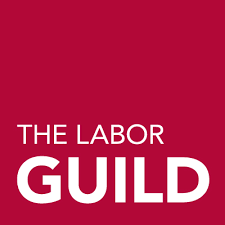This Week in Labor History, vol. 1: The Great Postal Strike
This Week in Labor History, vol. 1
by Sean Lundergan, Fr. Boyle Fellow
The Great Postal Strike, 1970
On March 18, 1970, New York City postal workers began a wildcat strike, and over the next week postal workers in over 200 cities and towns across the country joined, bringing the mail system to a virtual standstill.
In 1968, a study by the federal government found that the postal service’s “limited career opportunities” and “appalling working conditions” created “widespread disquiet” in the service’s workforce. That study also suggested that postal workers deserved the same collective bargaining rights as private sector employees under the National Labor Relations Act, but the government ignored the recommendation.
This was a period of high inflation, at the height of the Vietnam War, and the cost of living had begun far outpacing wage growth, especially in big cities like New York. Smaller wildcat strikes had popped up sporadically in the late ‘60s, but New York City’s letter carriers took decisive action on March 17, 1970: They voted to go on strike, setting up picket lines at post offices throughout the five boroughs. The picket was honored by other postal employees—25,000 clerks and drivers—and beginning on March 18, mail delivery in the country’s largest city ground to a halt.
Within two days, locals from New York State, New Jersey and Connecticut had joined in the strike. The federal government naturally condemned the strike, but also opposing the strikers was the national union president, James Rademacher, who pleaded with the president of the New York local to call it off. The local president urged his members to go back to work; they ignored him, even after Rademacher had reached a deal with the government to grant concessions in exchange for a return to work. A near-unanimous rejection of the deal by the rank-and-file signified the power of the strikers and the disconnect between union leadership and its members. (Members denounced leaders as “rats” and “creeps,” and an effigy of Rademacher was hung in Manhattan.)
The stoppage was a felony, as it’s illegal for a government employee to strike, so courts issued injunctions against the strikers wherever they popped up. Nevertheless the stoppage continued and expanded. Neither court order, nor government opposition, nor adominition from union leadership could persuade the strikers to return to work. Within days the strike had gone nationwide, with 200,000 workers from across the country walking off the job, including 6,000 in Chicago, the primary distribution center for the entire postal system, on March 20. Over 200 cities and towns in 15 states saw stoppages, including in Chicago, Boston, Detroit, San Francisco, and Denver.
Government officials knew they had to act quickly, in large part because they feared the situation could balloon into a broader strike of other government workers. President Richard Nixon declared a national emergency on March 21 and sent National Guardsmen and US Army soldiers to New York, where 25,000 troops attempted to sort and deliver the mail deemed most important—mail that was holding up businesses and the stock exchange. But, unsurprisingly, being in the military is not at all similar to being a professional mail handler, and the troops were no replacement for the strikers. Moreover, many soldiers ended up sympathizing with the postal workers and took their side by disrupting operations.
The strike wound down when leaders in Congress indicated they would immediately push through pay increases once everyone returned to work. Hundreds of local union leaders met with Rademacher to reluctantly agree to end the strike, but emphasized that he should call another national strike if the government’s concessions weren’t sufficient. With the threat of a new strike looming, negotiations began.
The Great Postal Strike resulted in moderate pay increases, as well as the Postal Reform Act, a landmark law that reconstituted the Postal Service as an independent agency. Under the PRA, workers received an 8% raise on top of the raise that had ended the strike, and career advancement became more attainable within the USPS. While the PRA didn’t grant the right to strike, it did allow collective bargaining for wages, working conditions and benefits with disputes subject to binding arbitration.
But the Great Postal Strike also demonstrated the vital role of labor in the day-to-to functioning of American life—and it demonstrated that the working people of the US, including federal employees, were willing and able to engage in collective action, and, if necessary, to defy the law and their union leaders to get what they deserved.
Sources:
Strike! Revised, Expanded and Updated, Jeremy Brecher. 2014. pp 229–232.
APWU Website—”History” https://www.apwu.org/apwu-history
NALC History of Postal Reform Legislation https://www.nalc.org/news/nalc-updates/body/Legislative-Background-and-Status-of-Postal-Reform.pdf
Join Our Mailing List
For Guild news, Labor School updates, Workshops, and CGA information.

